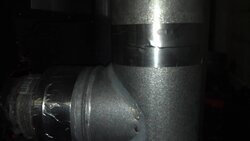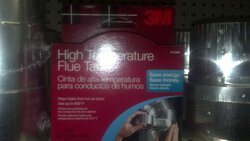I am wondering what type of sealant is best to use when joining pellet vent pipe together, or do you prefer not to use any sealant and rely on the pellet twist locks themselves. I have used the clear stove silicone, but wonder if I should use the Rutland direct vent sealant instead beause it is latex-based (it also cleans up or smooths over easily) but mainly so I can get the joints apart at least in a couple places for cleaning the pipe. How about automotive sealant? I have not used this on vent pipe and would think you wouldn't want to because it would be hard to get apart. But now I notice that new Duravent pipes come with orange silicone in them with the rope gasket. Any ideas so I can get these pipes apart later?
![DisplayImage[1].jpg DisplayImage[1].jpg](https://www.hearth.com/talk/data/attachments/64/64984-f7628a31bb0bf4c9004444aaf3362f41.jpg)
![21mApCAddkL._AA115_[1].jpg 21mApCAddkL._AA115_[1].jpg](https://www.hearth.com/talk/data/attachments/64/64985-a8562d08ccd772ca3bd51b4a35f4899a.jpg)
![yhst-95622685483394_2201_3684552658[1].gif yhst-95622685483394_2201_3684552658[1].gif](https://www.hearth.com/talk/data/attachments/64/64986-e99c60576e2cf73fcd52120d0df22f29.jpg)
![DisplayImage[1].jpg DisplayImage[1].jpg](https://www.hearth.com/talk/data/attachments/64/64984-f7628a31bb0bf4c9004444aaf3362f41.jpg)
![21mApCAddkL._AA115_[1].jpg 21mApCAddkL._AA115_[1].jpg](https://www.hearth.com/talk/data/attachments/64/64985-a8562d08ccd772ca3bd51b4a35f4899a.jpg)
![yhst-95622685483394_2201_3684552658[1].gif yhst-95622685483394_2201_3684552658[1].gif](https://www.hearth.com/talk/data/attachments/64/64986-e99c60576e2cf73fcd52120d0df22f29.jpg)



